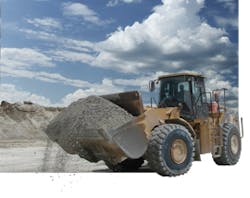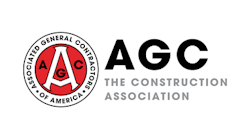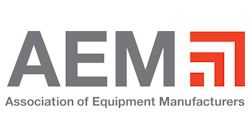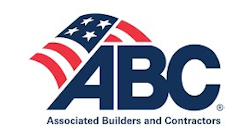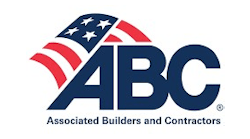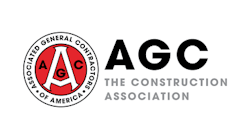Load up on some very simple do’s and don’ts when it comes to getting the most from your wheel-loader fleet-nothing complex, but just some basic steps that will keep your machine ready to ride. It all begins with proper selection. Add preventive maintenance and the right engineering ingredients, and you’ll have a trusty wheeled workhorse for many a season.
Basic Selection Guidelines
First, consider the many applications where wheel loaders are used-residential and commercial construction, heavy highway work, refuse and recycle, landscaping, snow removal, and more. “Wheel loaders work best in applications where travel speed, higher lifting capacities, and turf preservation is important,” says Allen Rudd, national marketing manager for Takeuchi.
Next, research the particular application and look for a machine with matching performance characteristics. “For example, use the right-size bucket based on the weight of the material you’re digging and lifting; and make sure the bucket capacity and dump height match the size of hopper you’re loading, while enabling you to meet your productivity goals,” says Tim O’Brien, brand marketing manager for Case Construction Equipment. Differentials can also contribute to productivity, says O’Brien. “Limited slip differentials are best for working on soft surfaces; and open or conventional differentials are best for hard surfaces, along with locking front differentials when extra traction is needed,” he says.
Choose the unit that will minimize your operating costs and maintain greater efficiency. “For instance, if you work in a load-and-carry application, a lock-up torque converter can greatly reduce your fuel consumption and improve your performance. Also consider what other items may be needed for efficiency in a specific application-such as a quick coupler, forks or special guarding,” says Armando Najera, wheel loader product manager for Komatsu America Corp.
Horsepower and operating capacity are two important factors. “Higher horsepower offers more dynamic force for pushing and production, but also translates to a heavier machine. If there are weight restrictions on the project site, you may need to opt for a smaller horsepower unit,” says Jamie Wright, product manager for Terex Construction Americas.
Wright also stresses the importance of knowing the loader’s operating capacity, including tipping load and lift capacities. “Make sure the loader you choose can handle the materials you’ll be moving. The weight of the material and how quickly it needs to be moved will influence the size of bucket you need-the bigger the bucket, the bigger the loader.”
Specifying a loader with higher travel speeds can increase productivity. “The more miles per hour the unit can travel-the quicker the cycle times. The latter is also affected by boom speeds, which will affect how fast the unit can load and unload material,” says Wright.
Ultimately, Wright says, the chosen loader should be adequate for 85% to 90% of your job-site needs. “Don’t sacrifice power or breakout force just to save a dollar-and always buy quality. Wheel loaders must be durable and reliable, because downtime is expensive.”
Preventive Maintenance
To keep a wheel loader running at peak efficiency, investing in a preventive maintenance program is always money well spent. “Wheel loaders operate at high rpms, with very high demands on hydraulics, and engine and drive train components-so it’s very important to observe the manufacturer’s recommended maintenance intervals, and consider erring on the side of more frequent maintenance cycles,” says O’Brien.
A regular maintenance schedule for wheel loaders includes inspections and service at scheduled intervals: daily (every 10 operating hours); weekly (every 50 operating hours); six-month (every 500 operating hours); and annual (every 1,000 operating hours). Jamie Wright of Terex Construction Americas outlines the following preventive program:
Before each workday begins, it’s important to check the main fluid levels, including the hydraulic oil, engine oil, fuel, and windshield wiper fluid, and to refill if necessary. The next step is to walk around the machine, checking for damage from the previous day. Your visual inspection should also include checking for leaks and making sure all the machine’s systems are lubricated and functioning properly. It’s also important to check that all safety signs are present and readable.
At the end of each day, while your wheel loader is still warm, it’s important that you wash down the unit-removing any dirt, dust, sand or other job-site material that can accumulate and contaminate your machine-and lubricate the unit according to the manufacturer’s manual, ensuring that lubricant reaches all critical points. During this process, it’s a great time to do another visual check for any external or internal damage, repairing and replacing as necessary.
Daily, it’s essential that operators not only report the hours on the unit but also how it is being used. For example, is it driving hard into piles? What kind of materials is it handling? How far are the materials being transported?
The weekly inspection includes checking the condition of the tires, tire pressure and tightness of the wheel nuts, the axles and propeller shaft fastenings, the bearing bushings and the pins/bolts, the articulated steering linkage assembly, the brake functions, and the function of all the safety devices.
Check whether the dust filter in the cab’s ventilation system is dirty, as the accumulation of dust can cause significant machine damage. The dust filter should be cleaned each week. During this check up, drain the fuel filter and properly lubricate the machine, according to the manufacturer’s guidelines.
Around the 100-hour mark, your inspection needs to include additional tasks, such as draining the water from the fuel tank and bleeding the brakes. Check several machine components including the air intake, the V-belt tension, the engine mount and pump attachment, and the engine speed settings. It’s also a good idea to check the upper and lower idle speeds and the acid level and battery connections as well as the machine’s hydraulic functions. The insert of the hydraulic oil return suction filter also needs to be replaced at this point. And you should check the oil on the front and rear axle differentials as well as the wheel hubs on both axles, changing the oil if necessary.
The six-month check is a good time for the operator and the service technician to have an open discussion about how the machine is being used day in and day out, as well as how it’s performing. Also, it’s a good time to look at the maintenance records to spot any patterns.
On an annual basis, your wheel loader should get a complete once-over. This is a good time to replace the cab ventilation’s dust filter, change the hydraulic oil, replace the breather and the brakes, and change the oil in the wheel hubs and axle differentials.
Proper Operation
“The operator’s skill in bucket loading, as well as the proper use of power train options to minimize wheel slips and spins, can add to machine productivity,” says O’Brien. “The operator can increase productivity by more than 30% through the correct use of machine features, such as selecting the right power mode, choosing the right traction setting, and using a lock-up torque converter, if available,” he adds.
According to Case, its new PowerInch feature (a part of its optional five-speed transmission with lock-up torque converter) lets the operator slow the machine as it prepares to dig or dump, minimizing the use of brakes. Case PowerInch also lets the operator quickly and precisely approach targets in tight areas, regardless of engine speed, and helps the operator by automatically adjusting to the grade being traveled and to the power inputs, while maintaining high rpms to maximize hydraulic power and control.
Komatsu has added ECO Guidance to give the operator tips on ways that they can reduce fuel consumption. A couple of these tips are to use fourth gear or reduce idle time. The operator can also do such things as reduce unnecessary movements, keep a clean job site, and avoid keeping the loader at full throttle. “The new loaders have faster response and more power, and most applications don’t require the operator to use full throttle very often,” says Najera.
As to safe operation, Wright says that no matter what materials the wheel loader is hauling, make sure that the load is balanced on the forks before moving anything. An unbalanced load can reduce the stability of the machine. Also, operators should be aware of the site conditions and work at a speed that will maintain high efficiency in a safe manner.
Productivity Features
Manufacturers are continually engineering new features into wheel-loader models to deliver greater ease of maintenance, improved fuel economy, and lower operating costs-and to meet strict emission standards, and importantly, to remain competitive in the market.
“As an example, wheel loader manufacturers have introduced the hydrostatic transmission to replace the traditional mechanical transmissions. This drive system provides a high power output per unit mass and has infinitely variable and stepless speed,” says Wright. “In addition, up to 90% of the maximum torque is available at startup. Hydrostatic drive transmissions provide a benefit here due to their high efficiency, which contributes to reduced fuel consumption. Manufacturer tests have shown that fuel usage can be reduced up to 10% with the new hydrostatic drive systems compared to mechanical drive transmissions. Hydrostatic, four-wheel drive with creep mode and dynamic braking gives operators speed control and efficient engine RPM when working in tight areas. The hydrostatic drive also reduces tire slippage, which results in faster cycle times and less wear and tear on the tires,” adds Wright.
While the hydrostatic transmission is one of the biggest improvements to be made in recent years, Wright says that there is a new system that is even more efficient, called the Hydrotransmatic System, which utilizes two-piston hydraulic motors that work together to create a very efficient drive system. Both motors provide power to the transfer case when high torque requirements are needed. Only one motor is utilized when high speed is required. This two-motor system lowers fuel consumption compared to the conventional systems and is considered state-of-the-art for mid-range loaders.
Manufacturers Showcase Efficiency Engineering
According to Gehl Co., whose articulated loaders are designed for smaller jobs and compact spaces, its machines have smaller engines for excellent fuel economy. Engines are coupled to hydrostatic drives to boost power and performance while delivering economical fuel rates per hour. Also, the operator’s platform opens to expose the drive system for maintenance when required.
Case says that its new F Series Wheel Loaders offers four technologies that improve productivity and fuel efficiency. First, the Selective Catalytic Reduction (SCR) system for Tier 4 Interim certification is the basic building block behind the efficiency gains of the Case F Series-typically gaining 10% in fuel efficiency. SCR, says Case, does not affect the combustion process, allowing the engine to produce maximum power.
Second, customers may select from economy, standard or max engine work modes to maximize performance specific to the application. For example, Case engineers says that using economy power mode when full power is not needed can achieve 17% to 20% better fuel efficiency compared with previous Tier 3-certified models.
Third, a standard idle-management system allows owners to program the machine to automatically shut down after a set period of idling, which can save up to 30% of fuel costs.
Fourth, Case says its machines can be equipped with an “efficiency package” consisting of HD axles with open differentials and a front hydraulically locking mechanism, along with a new five-speed transmission with lock-up torque converter. The latter item alone, says the company, can save up to 20% in fuel depending on the application.
According to Komatsu, its Tier 4 Interim wheel loaders feature the reduction of fuel consumption and the improvement of productivity as equal priorities. Komatsu Tier 4 Interim engines feature Cooled EGR and the Komatsu Variable Geometry Turbocharger for reduced fuel consumption in most models. All the construction-size Tier 4 Interim wheel loaders feature Komatsu SmartLoader Logic. This function matches the engine torque to the job, reducing fuel consumption during less demanding work, and is seamless to the operator, meaning it does not affect production. Finally, says the company, its new WA380-7 has a large capacity torque converter with lock-up in second, third, and fourth gears as standard equipment. The Komatsu large-capacity torque converter improves acceleration, top-speed, and hill-climbing ability, while reducing fuel consumption.
To help its customers properly maintain Komatsu equipment, maintenance points are easy to access. For Tier 4 Interim, Komatsu says that it offers standard features such as wider fin spacing for coolers and battery disconnects. Plus its Tier 4 Interim construction equipment comes with Komatsu CARE Complimentary Scheduled Maintenance, which gives the customer complimentary scheduled maintenance for the first three years or 2,000 hours.
Terex Construction Americas says its loaders utilize load-sensing hydraulics and incorporate a brake inching pedal. When the operator needs the engine at maximum rpms for a certain loading system, but still needs to maneuver the machine accurately, the brake-inching pedal can be used to control the amount of power they want to divert from the drive to the loader for increased operator control. Terex has also introduced a high-flow auxiliary hydraulic option to its TL80 and TL100 models, which allow an extended work application base with the use of continuous flow attachments.
The larger models in the Terex compact wheel loader line are equipped with SP-kinematics that combine the advantages of Z-kinematics (power at the bucket) with those of P-kinematics (precise parallel handling of the bucket and loader equipment over the entire lifting height), says the company.
Terex says it has designed its compact wheel loaders with a single-pin articulation joint, which provides better alignment and less need for adjusting. Articulated, full-hydraulic steering for fast and low-effort steering increases stability while operating even at low engine speeds. Competitors’ machines have upper and lower mounting pins, says Terex, which double the front-and rear-end mounting points and introduce alignment variables and adjustment concerns, which may contribute to decreased stability.
Improvements to the Doosan DX350LC excavator are paced by increased engine horsepower and torque, addition of a turbocharger, upgraded cooling system, and new hydraulic system.
The DX350LC is powered by a 281-horsepower, six-cylinder DL08K diesel engine using a cooled exhaust gas recirculation (CEGR) system, diesel oxidation catalyst (DOC) and diesel particulate filter (DPF). The turbocharged 466-cubic-inch engine features a common rail design with direct fuel injection, electronic control and four valves per cylinder. Cooling system upgrades include two variable-speed hydraulic fans allowing the engine and oil cooling systems to be controlled independently.
Increased swing torque allows the excavator to swing uphill more easily, as well as improve backfilling trenches. Increased digging force provides more power in harsh digging conditions, while increased lifting capacity allows the machine to lift and place more material with each cycle.
Tire Tips and Maintenance
“Proper maintenance is the life of the tire,” says Gary Nash, marketing director for Yokohama OTR. His top five tips for maintaining OTR tires are: 1) Select the proper tire; 2) determine proper air pressure, which will fluctuate from front to real or from cold versus hot and which will vary based on distance and loads; 3) ensure proper mating of the tires from side to side and from front to rear; 4) check air pressures daily; and 5) inspect tread for cuts and abrasions daily.
Nash says that since loaders vary in size, proper selection is a necessity-and since there are so many types of treads, tread patterns, and tread compounds, only a trained sales engineer will have the knowledge of proper fitment to the operation and application. “Yokohama OTR offers all the different compounds to advance tread life. Loader tire life is twice or more the normal life of a typical haul truck, therefore the casing is vitally important for long life and retread ability. Longer life plus up to three times the typical retread life means that our dealers and customers can achieve the lowest costs per hour,” he says.
Cara Junkins of Titan Tire Corp. says that bias tires are ideal in applications where the potential for rock type damage (cutting) to the tire exists. Wheel loaders used a quarry pit application typically use a bias tire since the bias is more repairable and the distances traveled are normally short. Radial tires are ideal for applications where traction, tread wear and/or distance are factors. Wheel loaders used in a yard loader application typically use radial tires for their longer wear characteristics and the cutting to the tire is not as great. Yard loaders spend more time moving from pile-to-pile and require a tire that provides traction to dig into a pile.
The next step, says Junkins, is selecting the tread pattern or design. In a yard loader application, a L2 or L3 tread design is recommended. An L2 tire offers maximum traction and cleaning ability in sand and soft soil conditions, while an L3 offers good rock resistance in general- purpose loader applications. In quarry applications an L5S or L5 tread design is ideal as they offer a deeper tread depth providing more resistance to rock cuts and a longer tread life. L-4 and L4S tires can be used in this application where longer distances are traveled.
Bucket Scales
To predict the weight in the bucket of a wheel loader requires determining three factors: hydraulic pressures, speed of the lift, and the position of the lift arms.
According to engineers at Loup Electronics Scale Systems, its technology uses either one or two hydraulic pressure sensors. Reference and direction sensors “tell” the scale the direction of travel, the position of the lift arms, and also calculate the speed of the lift. Each of these factors is used by the scale to calculate and display the weight on the scale display mounted in the cab.
Loup Electronics offers a wide variety of loader scale models that will fit any loading operation or type of equipment, says the company. Each of these models has a unique set of features and functions that will allow the operator to see each bucket load weight and the total amount loaded on every model. In turn, this improves the loading process by reducing trips to the bulk material pile to “top off” an unloaded truck, reducing the amount of time to load a truck to the legal limit, and assuring that the maximum load is being carried by each truck loaded.
Back to the Basics
Don’t skimp on quality. Don’t cut corners. By covering all the basics from proper selection to preventive maintenance, and utilizing the recommended technologies and techniques in day-to-day operation, your wheel loader will surely remain a most valuable and trusted workhorse.
